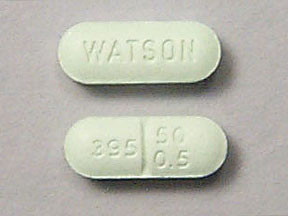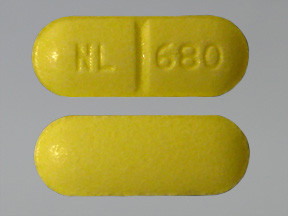PENTAZOCINE/NALOXONE - ORAL
PHONETIC PRONUNCIATION: (pen-TAZZ-oh-seen/nal-OX-own)
COMMON BRAND NAME(S): Talwin NX
GENERIC NAME(S): pentazocine HCl/naloxone HCl
Uses
USES: This product is used to treat moderate to severe pain. It contains 2 medications, pentazocine and naloxone. Pentazocine is an opioid (narcotic) pain reliever. It acts on certain centers in the brain to give you pain relief. Naloxone helps to prevent misuse of this product. It blocks the effect of pentazocine and may cause withdrawal reactions if this product is dissolved and injected. Naloxone does not have any effect when taken by mouth.
How to use PENTAZOCINE/NALOXONE - ORAL
HOW TO USE: Take this medication by mouth with or without food, usually every 3 to 4 hours or as directed by your doctor. If you have nausea, it may help to take this drug with food. Consult your doctor or pharmacist about other ways to decrease nausea (such as lying down for 1 to 2 hours with as little head movement as possible). The dosage is based on your medical condition and response to treatment. Do not take more than 600 milligrams of pentazocine in a 24-hour period. Do not increase your dose, take the medication more frequently, or take it for a longer time than prescribed. Properly stop the medication when so directed. Pain medications work best if they are used when the first signs of pain occur. If you wait until the pain has worsened, the medication may not work as well. If you have been regularly using other opioid pain medications (for example, morphine, methadone), withdrawal reactions (such as restlessness, watery eyes, widened pupils, sweating, runny nose) may occur when you start this product. Consult with your doctor or pharmacist for more details. This medication may cause withdrawal reactions, especially if it has been used regularly for a long time or in high doses. In such cases, withdrawal symptoms (such as restlessness, watery eyes, widened pupils, sweating, runny nose) may occur if you suddenly stop using this medication. To prevent withdrawal reactions, your doctor may reduce your dose gradually. Consult your doctor or pharmacist for more details, and report any withdrawal reactions right away. When this medication is used for a long time, it may not work as well. Talk with your doctor if this medication stops working well. Though it helps many people, this medication may sometimes cause addiction. This risk may be higher if you have a substance use disorder (such as overuse of or addiction to drugs/alcohol). Take this medication exactly as prescribed to lower the risk of addiction. Ask your doctor or pharmacist for more details. Tell your doctor if your pain persists or worsens.
Side Effects
Precautions
Interactions
Overdose
Images

- color
- light green
- shape
- oblong
- imprint
- WATSON, 395 50 0.5

- color
- light yellow
- shape
- oblong
- imprint
- NL 680

- color
- light yellow
- shape
- oblong
- imprint
- NL 680

- color
- light green
- shape
- oblong
- imprint
- WATSON, 395 50 0.5

- color
- light green
- shape
- oblong
- imprint
- WATSON, 395 50 0.5

- color
- light green
- shape
- oblong
- imprint
- WATSON, 395 50 0.5
Reviews
Faq for PENTAZOCINE/NALOXONE - ORAL
Pentazocine/Naloxone is a medication that combines two drugs: pentazocine, which is an opioid pain reliever, and naloxone, which is an opioid receptor antagonist used to reverse the effects of opioids.
Pentazocine works by binding to certain opioid receptors in the brain and spinal cord, blocking pain sensations. Naloxone, on the other hand, binds to opioid receptors and reverses or blocks the effects of other opioids in the body.
Pentazocine/Naloxone is used to relieve moderate to severe pain. It is also used to treat opioid dependence by reducing the effects of other opioids and helping to prevent withdrawal symptoms.
Common side effects of Pentazocine/Naloxone may include dizziness, drowsiness, headache, nausea, vomiting, constipation, dry mouth, sweating, or itching.
Pentazocine/Naloxone can be habit-forming if used for an extended period or in higher doses than prescribed. It is important to take the medication exactly as prescribed by the healthcare provider.
Since naloxone is included in the medication, it can precipitate withdrawal symptoms in individuals who are physically dependent on opioids. It is important not to abruptly stop taking Pentazocine/Naloxone without consulting a healthcare professional.
Inform your doctor about any known allergies, medical conditions, or medications you are currently taking. It is crucial to disclose any history of drug addiction or if you have used opioids within the past 7-10 days.
It is recommended to consult a doctor before using Pentazocine/Naloxone during pregnancy or while breastfeeding. The potential risks and benefits should be weighed carefully.
Drinking alcohol while taking Pentazocine/Naloxone may increase the risk of side effects such as dizziness or drowsiness. It is best to avoid alcohol while on this medication.
Warning
WARNING: Pentazocine has a risk for abuse and addiction, which can lead to overdose and death. Pentazocine may also cause severe, possibly fatal, breathing problems. To lower your risk, your doctor should have you take the smallest dose of pentazocine that works, and take it for the shortest possible time. See also How to Use section for more information about addiction. The risk for severe breathing problems is higher when you start this medication and after a dose increase, or if you take the wrong dose/strength. Taking this medication with alcohol or other drugs that can cause drowsiness or breathing problems may cause very serious side effects, including death. Be sure you know how to take this medication and what other drugs you should avoid taking with it. See also Drug Interactions section. Get medical help right away if any of these very serious side effects occur: slow/shallow breathing, unusual lightheadedness, severe drowsiness/dizziness, difficulty waking up. This medication should only be taken by mouth. Do not try to dissolve and inject the tablets. Injecting this product, alone or with other substances, may cause serious, possibly fatal, side effects. Keep this medicine in a safe place to prevent theft, misuse, or abuse. If someone accidentally swallows this drug, get medical help right away. Before using this medication, women of childbearing age should talk with their doctor(s) about the risks and benefits. Tell your doctor if you are pregnant or if you plan to become pregnant. During pregnancy, this medication should be used only when clearly needed. It may slightly increase the risk of birth defects if used during the first two months of pregnancy. Also, using it for a long time or in high doses near the expected delivery date may harm the unborn baby. To lessen the risk, take the smallest effective dose for the shortest possible time. Babies born to mothers who use this drug for a long time may develop severe (possibly fatal) withdrawal symptoms. Tell the doctor right away if you notice any symptoms in your newborn baby such as crying that doesn't stop, slow/shallow breathing, irritability, shaking, vomiting, diarrhea, poor feeding, or difficulty gaining weight.
Disclaimer
IMPORTANT: HOW TO USE THIS INFORMATION: This is a summary and does NOT have all possible information about this product. This information does not assure that this product is safe, effective, or appropriate for you. This information is not individual medical advice and does not substitute for the advice of your health care professional. Always ask your health care professional for complete information about this product and your specific health needs.
No Reviews Yet